For over four decades kuia Elizabeth Mana Hunkin (Ngati Kahungunu) and Hokimoana Te Rika-Hekerangi (Tuhoe) have been teaching te reo Māori with Te Ataarangi – a learner-friendly language method which uses Cuisenaire rods (rakau).
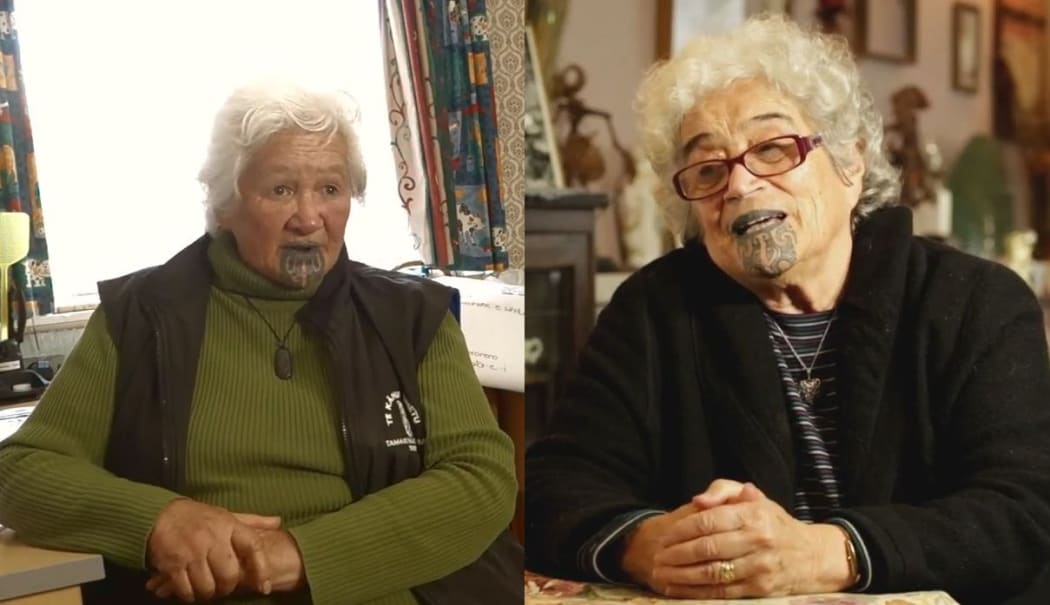
Hokimoana Te Rika-Hekerangi and Elizabeth Mana Hunkin Photo: YouTube screenshot
The Te Ataarangi ‘alumni’ first learned the method from its creators – Ngāti Pōrou women Katerina Te Heikoko Mataira (a writer, linguist and teacher) and Ngoi Pewhairangi (an accomplished composer who worked for the National Council of Adult Education). Since its inception, the method has been taught to over 50,000 people.
Elizabeth Hunkin was born and raised in Nuhaka and attended school in Waikaremoana. From there she went to Turakina Māori Girls School and then onto Teachers Training College in Wellington. It was in Wellington that she met Katerina and Ngoi, who taught Te Ataarangi. That was in 1979. Whaea Liz (as she is known) has been teaching Te Ataarangi ever since.
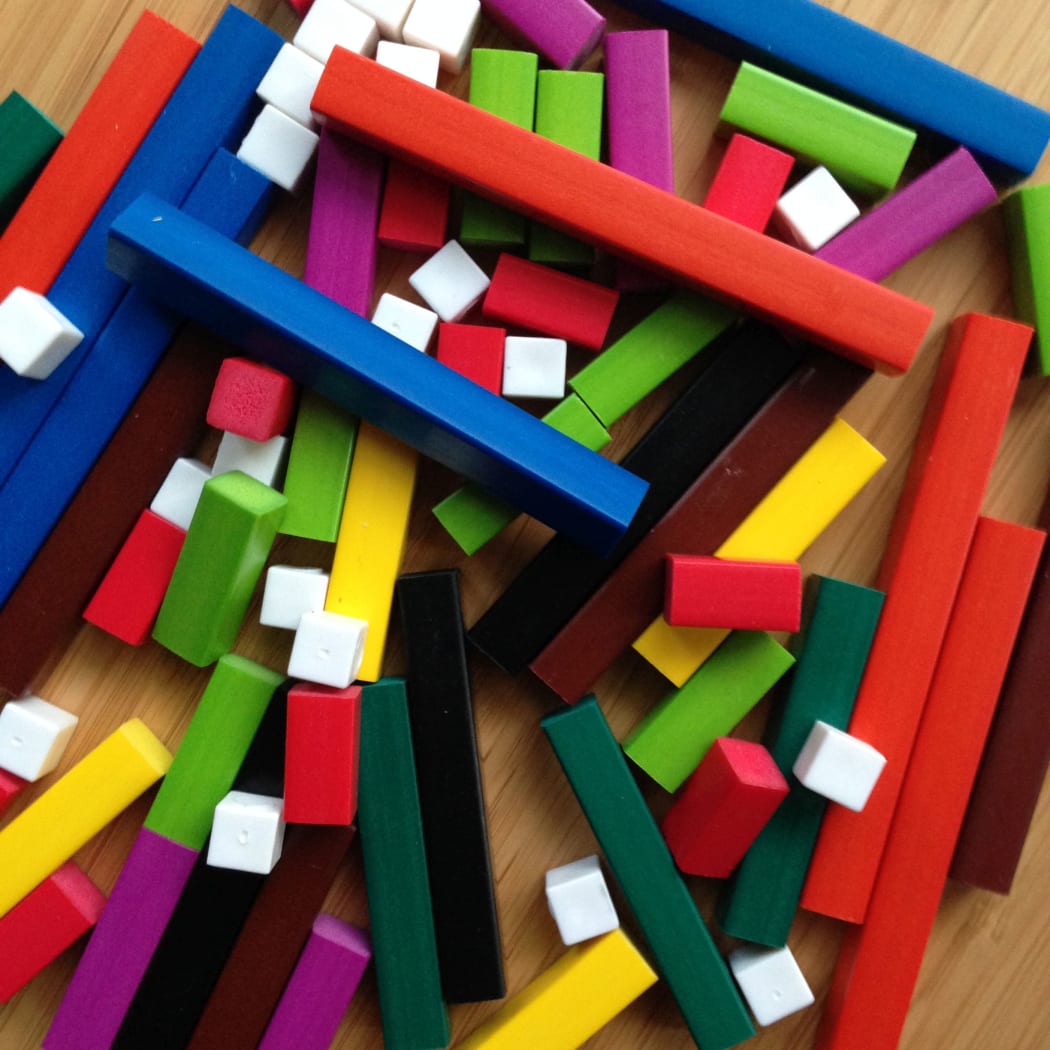
The Cuisinere Rods used in the Te Ataarangi method Photo: Flickr / albyantonlazzi
In 2012, Whaea Liz was awarded for teaching excellence at the Tertiary Teaching Excellence Awards as the Tumuaki (Principal) of Te Kura Motuhake o Te Ataarangi in Wairoa. She established the school along with her late husband Graham Hunkin - an Australian who was one of Liz’s pupils.
"I had community classes then (set up) our Kura. We celebrated 20 years. Then this year I’ve started back into the community because students didn’t seem to be able to come into the Kura, so I went out to them” - Elizabeth Hunkin.
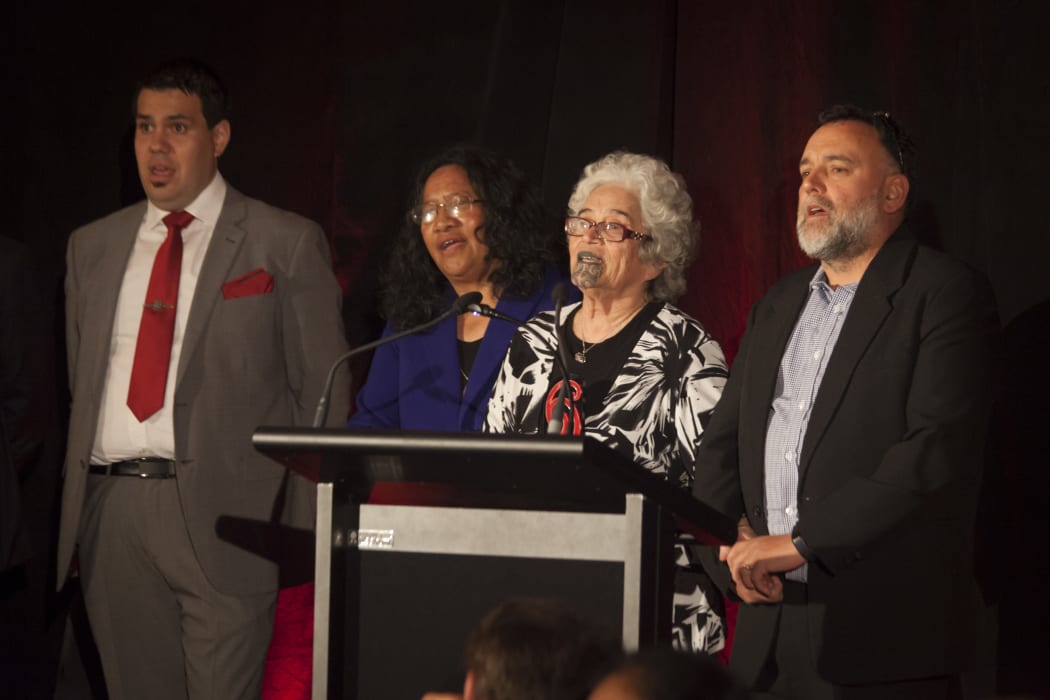
Elizabeth Mana Hunkin was the recipient of Te Tohu Aroha mo Ngoi Pewhairangi. Photo: Te Waka Toi
At the recent Te Waka Toi Awards, the MC described Whaea Liz as a ngākau māhaki (kind-hearted) person. Liz agrees that it takes someone patient and open-minded to teach te reo Māori. She is wary that learners of the language can have their confidence shut down when they're made to feel incompetent.
"I really do believe that sometimes we are very damaging. Once their confidence is gone it takes a long time to rebuild again. Sometimes it’s just a look - they don’t have to say anything - and they think, 'Oh, 'kei te hē aku korero. But which part was wrong?' The learners are not sure, that’s the big problem” - Elizabeth Hunkin.
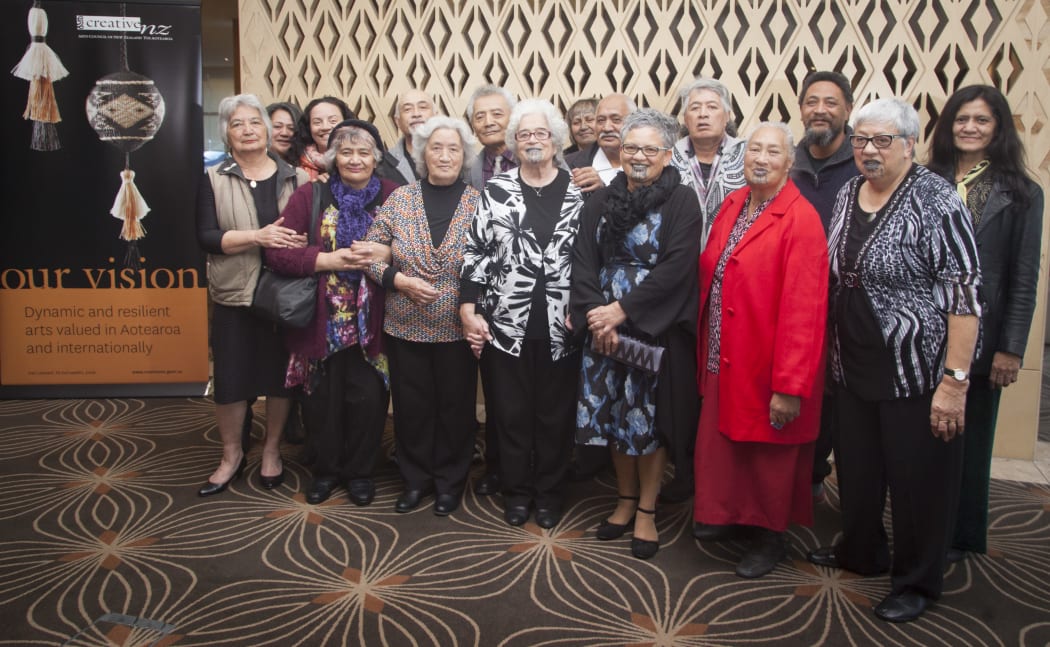
Whaea Liz with her whanau at this years Te Waka Toi Awards. Photo: RNZ/Justine Murray
Liz says that the Māori language was handed down to her by her ancestors and te reo Māori should be free to learn.
"To me it’s so important. I don’t ever want anyone to say to me, 'I couldn’t afford to learn te reo Māori”
This year Liz received Te Tohu Aroha mō Ngoi Kumeroa Pewhairangi – Strengthening the Māori language award at The Waka Toi awards. She has lived in her hometown of Nuhaka since 1984, and continues to run weekly te reo Māori night classes.
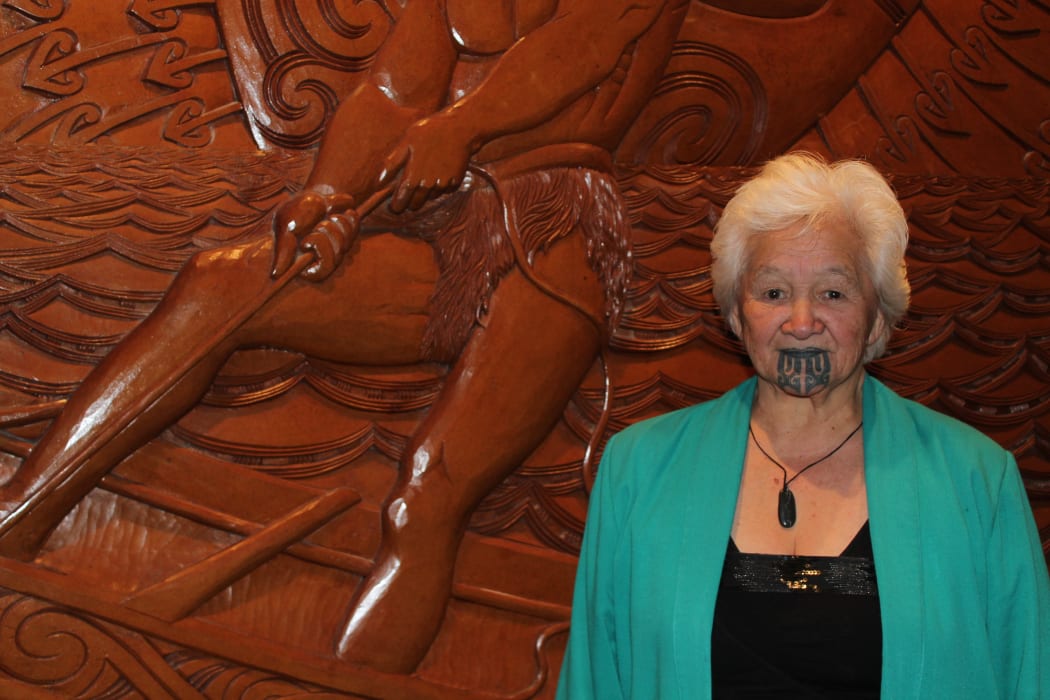
Hokimoana Te Rika-Hekerangi Photo: RNZ/Justine Murray
Hokimoana Te Rika-Hekerangi has taught Te Ataarangi for the past four decades. At 78 years old, she continues to teach in Murupara.
Hokimoana says her dedication to teaching te reo was because of Te Ataarangi. In the early days while raising her family, the native speaker would sit in her lounge and practise how to teach the method to others.
"I timata mai taku kaingakau ki te ako i tō tatou reo na runga i te mahi o Te Ataarangi. (My passion to teach the Māori language came from Te Ataarangi.)

Hokimoana Te Rika-Hekerangi portrait was painted by artist Owen Dippie Photo: Supplied
A portrait of Hokimoana was recently painted by artists Owen Dippie and Tame Iti on a wall in Taneatua. She was chosen out of several women from the area and agreed to do it after Tame Iti explains its purpose:
“He momo pōwhiri ki roto o Taneatua, Ki roto o Tuhoe, Ki roto o Te Urewera.” (It’s a form of a welcome to Taneatua, to Tuhoe land, to Te Urewera) - Tame Iti.
Hokimoana Te Rika-Hekerangi was one of four recipients of Ngā Tohu ā Tā Kingi Ihaka – Lifetime of service to Māori arts, at this year’s Te Waka Toi awards.
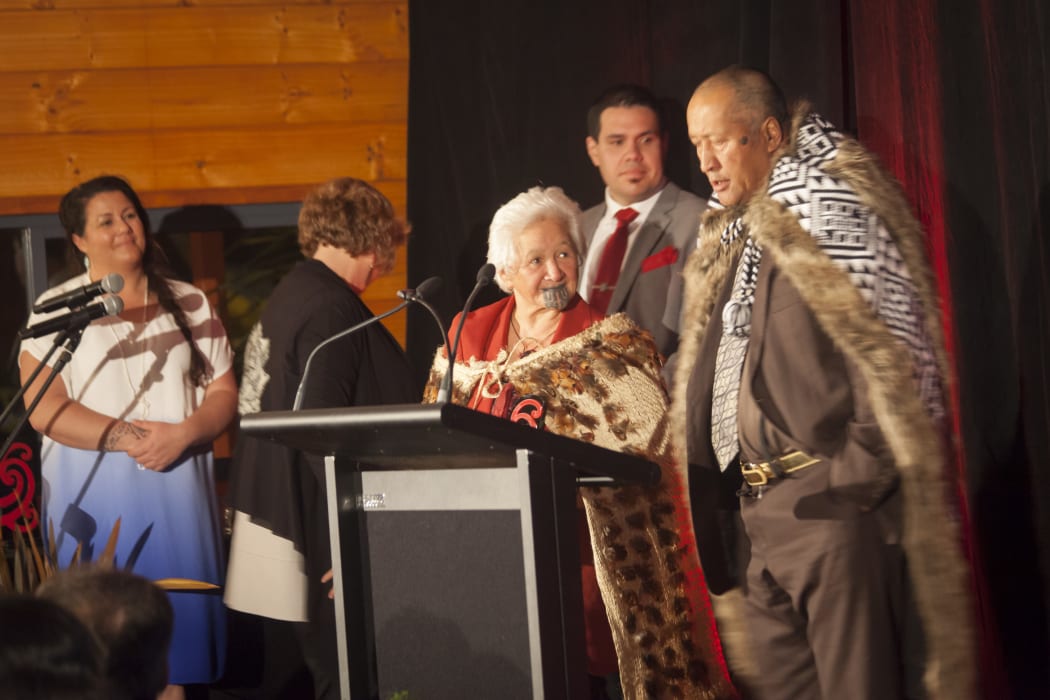
Hokimoana receiving her Ngā Tohu a Ta Kingi Ihaka. Photo: Te Waka Toi

